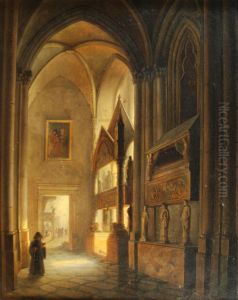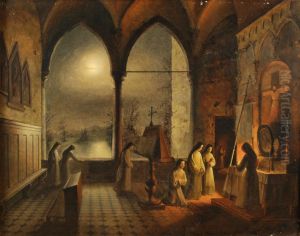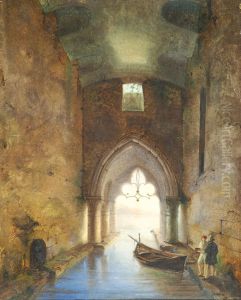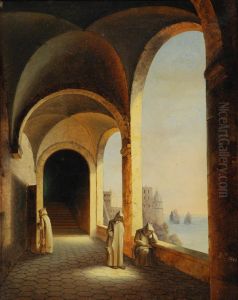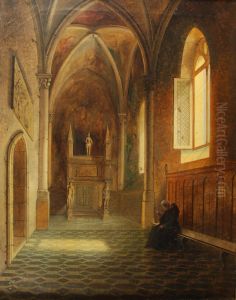Maria Carolina Di Borbone Paintings
Maria Carolina di Borbone, also known as Maria Carolina of Bourbon-Two Sicilies, was a member of the royal family of the Two Sicilies, a dynastic branch of the Bourbon family, which ruled over the southern Italian kingdom prior to the unification of Italy. She was not an artist by profession, but her life is intertwined with the historical and cultural context of the time, which was rich in artistic production.
Born on February 26, 1822, in Naples, Maria Carolina was the daughter of King Francis I of the Two Sicilies and his second wife, Maria Isabella of Spain. Her upbringing was typical of European royalty, with an education that likely included exposure to the arts, languages, and court etiquette. As was common for princesses of her era, Maria Carolina's marriage was arranged for political reasons. She became the Duchess of Berry upon her marriage to Henri, Count of Chambord, who was the legitimist pretender to the French throne as Henry V.
Maria Carolina's life was marked by the turbulent political climate of the 19th century. Her husband's claim to the French throne was a source of conflict during a time when the future of monarchies across Europe was uncertain. The rise of nationalist movements and the push for unification in Italy also affected her family's rule in the Two Sicilies.
Despite the political upheaval, Maria Carolina was known for her charitable work and support of religious institutions. She did not have a direct impact on the arts as an artist or patron, but the period in which she lived saw a flourishing of culture, especially in the realms of opera and the visual arts, with figures such as Giuseppe Verdi and the Nazarenes contributing to the rich cultural tapestry of the time.
Maria Carolina died on December 14, 1869, in Austria-Hungary. By the time of her death, the Kingdom of the Two Sicilies had been absorbed into the newly unified Kingdom of Italy. Her life reflects the complexities of European nobility during a period of significant change and the end of the age of monarchies in much of Europe.
